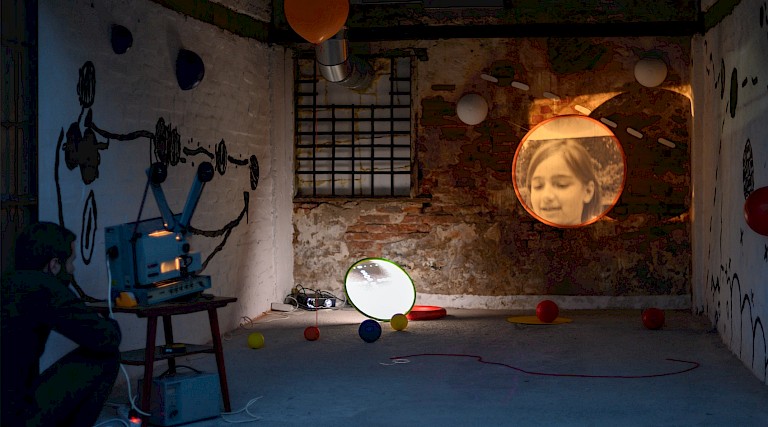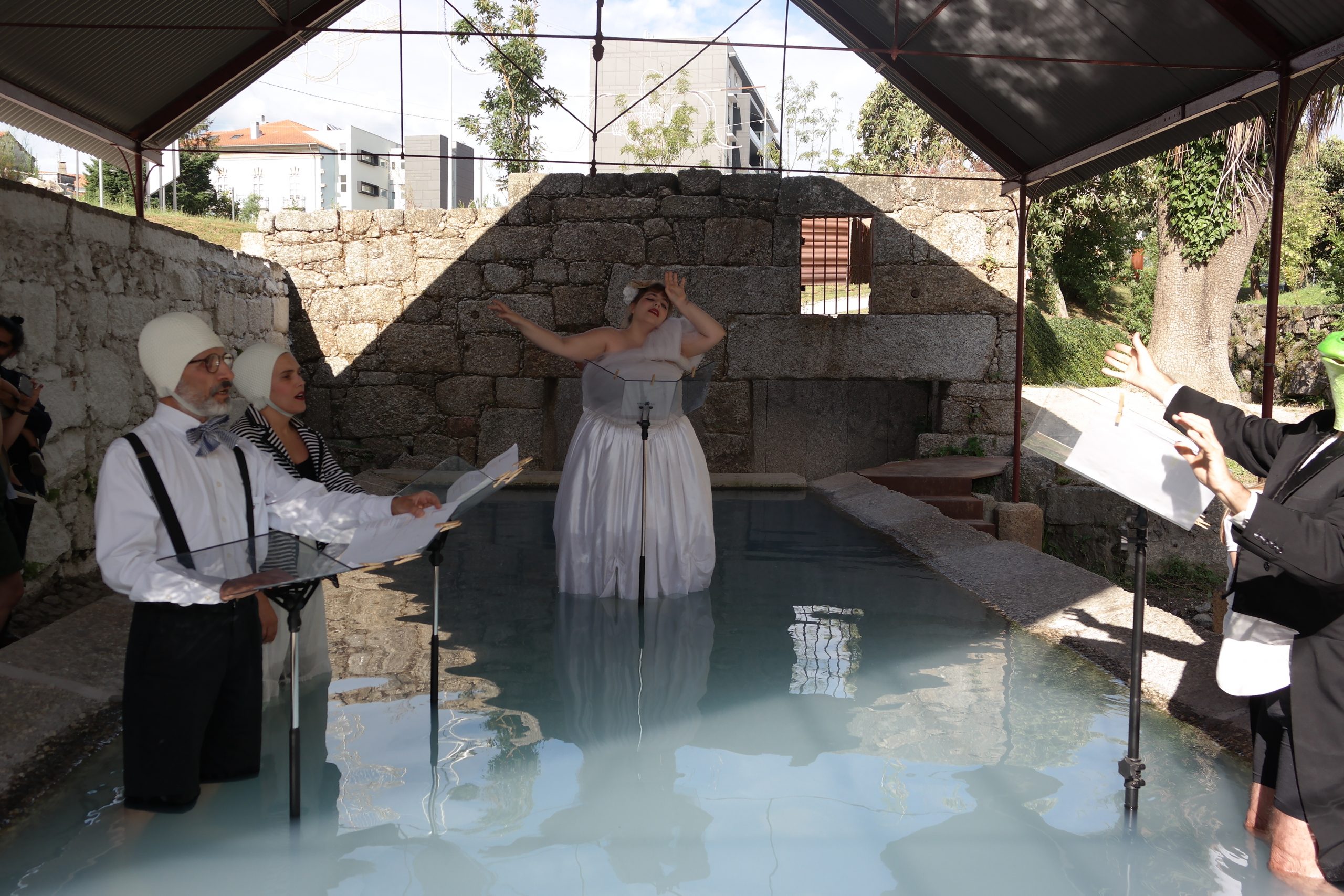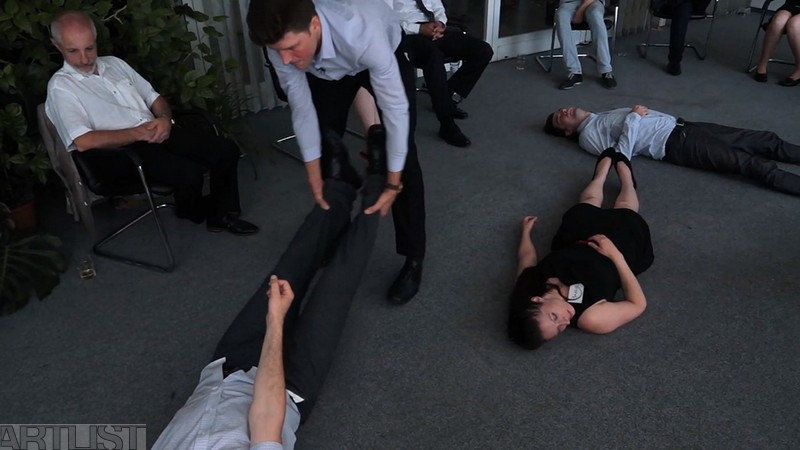The central shopping street in Zagreb is called Ilica, and according to local curator Karmen Krasić Kožul, the appearance of this street figuratively refers to a certain aspect of the contemporary world which she calls the Global Self. It is no different from other streets in cities anywhere else in the world with the same stores offering the same goods to the same customers. But all you need to do is go almost to the end and enter the courtyard of house number 37. You’ll breathe in an entirely different atmosphere, one we also know, but from somewhere else: a little dirty, a little abandoned. We’d probably use words like “authentic” and “original” to describe it. This whole area must have looked something like this in the past, we say to ourselves. But not even that is true anymore – in the irregularly shaped courtyard, only a few store–workshops survive. The others are abandoned. If we so desired, we could visit an optician, look into a ceramics workshop, or have our keys copied. These craftsmen might have already been here for several decades, and we might say they come from a time before. But what do these terms in the past and before mean? We could term this age the age of local capitalism, when fast fashion stores (and others of a similar nature) were in their infancy or did not exist at all. It is at similar locations where – according to curator Karmen Kožul – we find our Local Self. There are more of these half-abandoned places that seem to have once been more alive around Zagreb, and there are now various initiatives bringing attention to them and trying to involve them in the local community through cultural events. The most distinctive of these is Project Ilica, whose aim is to “transform, in the long-term, the urban experience through the social activities of artists, associations, universities, crafts, and community involvement”.
The inner courtyard of number 37 is connected to this initiative, but even so, it still lives its own life. In addition to the workshops, several trees, a parking lot, and an abandoned garage, there is also a shop here, Bad Blue Boys, which offers the merchandise of Dinamo, Zagreb’s most famous football team. The store also serves as one of the fan bases. In another of the garages, the pop-up gallery Garage Kamba has operated since 2017. Another community has developed around this gallery.
In 2019, Kamba partnered with the LAB 852 initiative in relation to the Magic Carpets project. Curators Karmen Krasić Kožul and Marija Kamber organised events under the joint name Superorganism. The spring season saw several workshops for artists focused on pedagogic activities in combination with findings from psychology, and also an art workshop for children.
Two artists were then invited for a residency in Zagreb in April and May – Gemma Riggs from the United Kingdom and Matthias Krinzinger from Austria. Both artists were selected on the basis of their previous works. Among other topics, both take on the phenomenon of play, they work with communities, and also include a particular sense of humour which helps them find a detached view when working outside gallery spaces.
During her residency, Gemma Riggs worked with the Zagreb-based choreographer Martina Tomić. Their collaboration was not planned out in advance, instead being created in situ: Martina’s father owns one of the shops in the courtyard. Both artists have a lot in common: an interest in the merging of artistic disciplines, the social aspects of play and education. According to Gemma Riggs, these collaborative and interdisciplinary methods allowed them to work with people who were not artists. Together, they made contact with local residents, involving a group of eleven- and twelve-year-old girls whom Gemma filmed during their games in the courtyard. Together, they explored the specificity of the site through play, creating a space in which they felt safe. Time spent in one place allowed the participants to slow down the rush of the everyday and be more in contact with themselves and others. For the artist, it was (and is) crucial to observe how our internal processes manifest themselves externally, what happens when our thoughts and emotions are given the time and space to show themselves.
The programme culminated on Friday the 24th of May 2019. The result of Gemma’s residency was an installation in the Kamba gallery, In our own time. A 16mm film recording of the girls was screened, along with interactions from the courtyard recorded on a digital camera, objects and drawings by the girls, and a graphical explanation of the games played in the film. Gemma Riggs peacefully intervened in the local space, essentially leaving it unchanged, only recording the events and prescribing a different dynamic for a time. The refined work with site and people thus disproved Gemma’s statement during a discussion on gentrification with Karmen: “The arrival of artists is not always a good sign”. The film from the Zagreb residency was also screened at the end of June at the Festival of Looking in Folkestone.

Matthias Krinzinger also works with play, but in a different context. His work begins with the conviction that joint activities connect people. Through these, people have a similar experience which they can extend and share, build relationships on and create societies. According to Matthias, play is important at every age and also becomes a part of societal superorganisms. One can connect communities through play, the art world opens to other worlds and vice versa: through entertaining formats and the inclusion of people, Matthias refers to various models of functioning in today’s society. In Zagreb, the Austrian artist took up the existence of Dinamo’s fan shop. He called his first event Heavy Metal, taking inspiration from a quote by conceptual artist Tom Marioni: “the act of drinking beer with friends is the highest form of art”. He invited – among others – visitors and fans of the Dinamo store. Together, they listened to heavy metal, drinking beer cans by the fire. They then let the cans melt in the fire, casting amulets and artworks out of them. These then became both a proof and souvenir of this meeting.
Krinzinger then organised a secret betting night, also involving the local locksmith. Friday the 24th of May was when the happening Dinamo always wins (and loses) took place. Matthias brought a foosball table to the courtyard, organising a tournament in which anyone could take part. All the players were painted blue – Dinamo’s club colour. Everyone won, everyone lost, and everyone got a prize. The event, however, was not a critique or a mockery of football society – quite the contrary, for the artist, this strong community became a crucial inspiration reflecting the mechanisms of contemporary society. Identification and the desire to win were relativised, while cohesiveness and the formation of otherwise non-existent relationships remained.
What’s crucial about the Zagreb projects is that they do not primarily try to bring life to the abandoned site through a cultural programme they bring from outside. They take into consideration the problem of gentrification in all its complexity. They involve the local communities, shops, craftsmen and their businesses. They do not chase them out with new models of culture and entertainment, they do not try to include them at any cost or transform their activities. They take them as part of the site, attempting cohabitation and dialogue, whilst also gently alerting society to their existence (and thus also their importance in the urban superorganism). Both artists left a trace, subtle at first sight, located somewhere between the global and the local. They provided themselves and several local inhabitants with a new experience and, in a sense, a kind of adventure, which was and can be part of everyday goings-on. Play can also lead to considerateness and care for one’s environment and oneself, as well as putting up a mirror and helping create critical thinking. Art steps out from its distant pigeon hole, and so together with the American curator and critic Nato Thompson, we can ask not what is and isn’t art, but what art causes, what it does and transforms. 1
Tereza Špinková is an art critic and curator.
1 Nato Thompson: Contributions to a Resistant Visual Culture Glossary, in: Journal of Aesthetics and Protest, December 2014.



